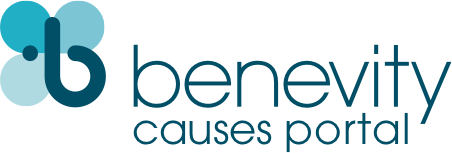Asociación Rescate y Conservacion de Vida Silvestre
This organization has already been registered
Someone in your organization has already registered and setup an account. would you like to join their team?Profile owner : i**o@a************a.o*g
Mission Statement
ARCAS's mission is to protect wildlife, conserving the ecosystems and biodiversity of Guatemala, guaranteeing the sustainable use of natural resources for future generations. Its strategic objectives are to: 1. Rescue, rehabilitate and release native wildlife into their natural habitat. 2. Combat the cause and effects of illegal wildlife trafficking. 3. Promote education and sustainable community development with an emphasis on ecosystem health. 4. Contribute to the management and sustainable use of natural resources in key protected areas.
About This Cause
ARCAS is a non-profit Guatemalan NGO formed in 1989 by a group of Guatemalan citizens who became concerned as they saw their precious natural heritage - especially their wildlife - rapidly disappearing before their eyes. ARCAS was originally created for a very specific and urgent purpose: to build a rescue center in the northern Peten area, home to the Maya Biosphere Reserve, to care for and rehabilitate wild animals that were being confiscated on the black market by the Guatemalan government. Since its establishment, the ARCAS Rescue Center has grown into one of the largest and most complex rescue centers in the world, receiving between 200 and 400 animals of more than 50 species per year. Since the establishment of the Rescue Center in Peten, ARCAS has branched out into other very necessary activities including environmental education, protected areas management, marine turtle conservation, sustainable community development, ecotourism and reforestation. ARCAS’s three main project sites are: the Guatemala City/Central highlands area, the remote northern department of Petén, and the Hawaii area of the southern Pacific Coast. Peten • Rescue and rehabilitation of 200 - 400 confiscated wild animals per year at the rescue center. The Rescue Center is a model for Latin America, receiving over 50 different species and serving as a hub for training, education and enforcement for the region. • Scarlet macaws: Rescue of 2-6 macaws per year; captive breeding of non-releasable birds; and release of captive-bred birds into the MBR. The BBC Nature documentary Jungle Animal Hospital features the releases of these macaws and other animals. It is aired regularly on Animal Planet and clips can be viewed at: https://www.bbc.co.uk/programmes/b077nmsl • Creation of the Biodiversity Educational Center (CeBio, https://www.facebook.com/cebiogt). The center includes outdoor trails and exhibits and an exhibits hall with virtual reality and other interactive displays. • 2,000 – 4,000 children per year participate in educational activities, including animal releases and visits to the BEC. • Organization of 8-10 training courses per year in wildlife veterinary medicine and rescue. • Hosting of 200 – 300 researchers, interns and volunteers per year at the Rescue Center. Hawaii/Pacific coast • With the support of the 7 communities of the Hawaii Marine Protected Area (Not the island! A beach on the Pacific coast of Guatemala.), incubation of 40 – 60,000 olive ridley and leatherback sea turtle eggs at the Hawaii Hatchery. • Rescue, rehabilitation and release of 20 - 80 confiscated or injured marine and terrestrial wild animals per year. • COLORES yellow-naped amazon conservation: Community-based nest protection and research and environmental education at 6 hotspots along the Pacific coast (@Conservacionlorosguatemala) • Community-based sea turtle population monitoring on seven index beaches on the Pacific coast. Production of the annual Sea Turtle Situational Analysis (https://arcasguatemala.org/who-we-are/arcas-publications) • 3000 – 4000 children per year participate in educational activities in the Hawaii area, including presentations in schools, hatchling releases, clean-ups and reforestations. • Hosts 30 – 50 researchers, interns and volunteers per year at the Hawaii Park. • Creation and administration of the 4000+ha Hawaii Marine Protected Area, home to some of the most important sea turtle nesting beaches and mangrove wetlands of the country. • In 2007, with the support of the IUCN and Disney created the 25ha El Salado Reserve in the Hawaii area. With WWF and the Van Tienhoven Foundation reforested the reserve and developed educational trails. Guatemala City/Central highlands • Public awareness campaigns on wildlife trafficking. • Wildlife advocacy: IUCN motions for endangered species; Co-sponsor of the first Guatemalan animal welfare law and the establishment of the Animal Welfare Unit of the Ministry of Agriculture; Together with Animal Defenders International, coordinated the transfer of 25 lions and tigers from circuses to sanctuaries in the US and Africa. • Collaborating in the management of the 5000+ Cordillera Alux protected area, the largest protected area in the Guatemala City area, source of much of its drinking water, and home to a wealth of epiphytes, birds and reptiles. • Disaster relief for animals and humans during Hurricane Mitch, TS Stan and the Fuego volcano eruption (Rotary Club/Disney/IFAW).
